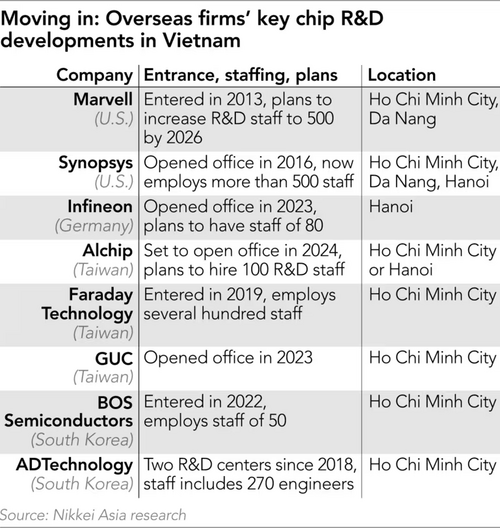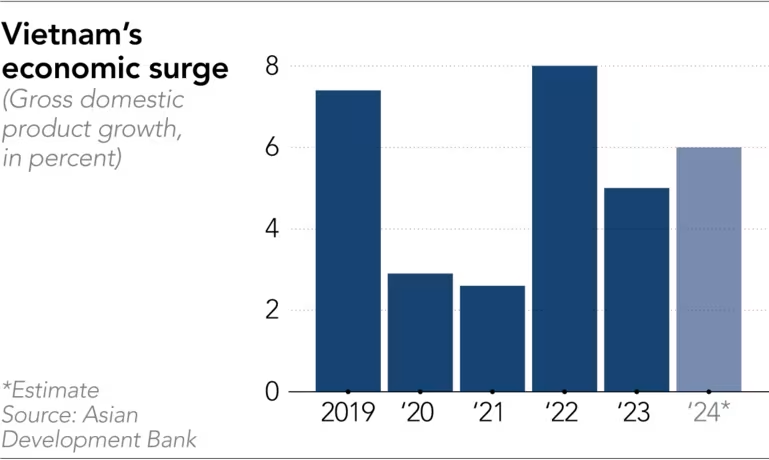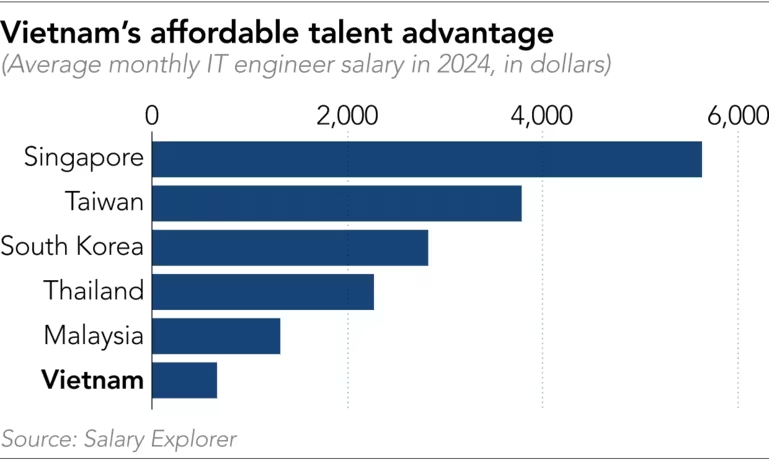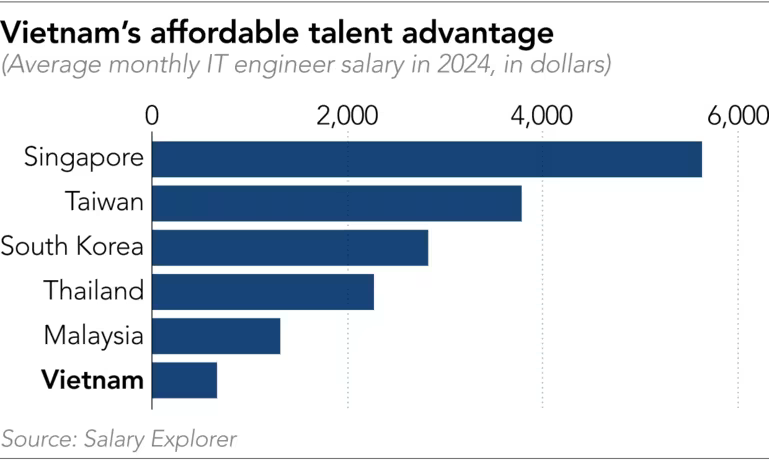Vietnam's Semiconductor Education Revolution and Career Growth
Explore how Vietnam is building a strong semiconductor workforce, unlocking exciting career opportunities and positioning itself as a technology leader.

Key Points
- Vietnam aims to train at least 50,000 semiconductor engineers by 2030 to meet the growing global demand for skilled professionals.
- Key companies like Alchip and Marvell are expanding their operations in Vietnam, attracted by the country's high-quality workforce and commitment to innovation.
- Collaboration between educational institutions and industries is vital for developing a talent pipeline that can fulfill the needs of the rapidly evolving semiconductor sector.
Vietnam is experiencing a remarkable transformation in the field of electrical and electronics engineering education, particularly within the semiconductor industry. As a country with a rich tradition in STEM (science, technology, engineering, and mathematics) fields, Vietnam is stepping up to meet the increasing global demand for skilled professionals in semiconductor design and production.

In recent years, various educational initiatives have sprung up, aimed at cultivating a robust workforce for the semiconductor sector. The Vietnamese government has set an ambitious target to train at least 50,000 engineers and chip designers by 2030. This initiative is primarily driven by a booming demand for semiconductor engineers fueled by the rapid expansion of artificial intelligence (AI) technologies.
The Push for Skilled Workforce Development
The escalating needs of industry giants and emerging startups alike underscore the significance of this educational evolution. Companies like Alchip Technologies and Marvell are actively recruiting local talent, drawn by Vietnam’s high-quality, affordable workforce. For instance, Alchip plans to double its engineering staff in Vietnam to support its R&D efforts. The decision stems from a thorough evaluation of various Asian markets, revealing Vietnam's unique advantages in terms of talented engineers and a strong commitment to hard work.

A vibrant seminar culture is also emerging, where students and professionals alike gather to share knowledge and discuss innovations in chip design. Human resource professionals from major corporations express optimism over the eager involvement of Vietnamese students, showcasing an impressive appetite for learning and innovation in their fields.
Strengthening Educational Frameworks
The government acknowledges the urgent need to enhance educational frameworks to align with international standards, particularly in semiconductor technology. Effective collaboration between academic institutions and industries is crucial. For example, universities are encouraged to provide programs tailored to existing industry requirements while enriching the curriculum with practical experiences.

Furthermore, institutions such as
are taking significant steps to cultivate this talent pool. They have implemented rigorous training programs that aim to equip students with the practical skills required to thrive in the semiconductor industry, aiming to produce 1 million skilled professionals by fostering a culture of innovation and entrepreneurship.
Market Dynamics and Future Prospects
The semiconductor industry is evolving at a rapid pace, responding to both local and global challenges. Companies in Taiwan, for instance, are increasingly looking toward Southeast Asia, especially Vietnam, to establish new manufacturing bases in response to growing market demands. This shift presents a unique opportunity for Vietnamese engineers to secure a foothold in global supply chains.

According to recent reports, the average monthly salary for semiconductor engineers in Vietnam stands at approximately $665, contrasting sharply with salaries in developed nations like
and the U.S. However, the potential for salary growth is high, with projections indicating that wages could increase significantly as demand continues to rise.
Bridging the Gap
Despite these advancements, Vietnam still faces a significant challenge in meeting the surging demand for qualified engineers. With an estimated requirement of 5,000 to 10,000 new engineers per year, the educational sector must not only expand but also adapt swiftly to changing market needs.

This dynamic landscape requires a concerted effort from educational institutions, businesses, and the government. By enhancing collaboration and investing in student skills, Vietnam is poised to become a significant player in the global semiconductor industry.
There is a palpable sense of optimism surrounding the future of semiconductor education in Vietnam. With a youthful, technologically adept population and a government committed to fostering innovation, the country is well-positioned to leverage its educational initiatives. As it continues to build a strong talent pipeline, Vietnam stands on the precipice of exciting developments in the semiconductor sector, potentially transforming it into a powerhouse in technology and innovation.



